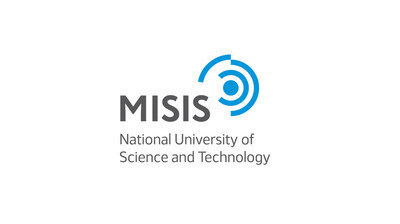MOSCOW, Oct. 13, 2021 /PRNewswire/ -- A Russian-Belorussian research team has come up with an innovative method for obtaining white pigments from toxic metallurgical waste. The method allows the production of high-quality industrial pigment while significantly reducing the toxicity of the raw materials. The study was published in Journal of Chemical Technology and Biotechnology.

Electroplating is a technique that adds a surface layer of metal to another type of metal through electrolytic process. It is typically used to prevent corrosion and rust and improve the surface properties of metal objects. Zinc plating is the most common coating, with ammonium chloride -based solvent commonly used as the plating electrolytes.
Despite their numerous advantages, current industrial processes involving electroplating remain amongst the most environmentally hazardous. Extremely toxic, cancerogenic heavy metal ions form in galvanic wastewaters due to the joint discharge of rinsing wastewater and spent electrolytes.
Electroplating wastes are commonly managed by the recovery and recycling of plating electrolytes. However, the regeneration of electrolytes is a complex multistage process that requires expensive equipment. In addition to the high cost, the electrolyte can withstand only a certain number of regeneration cycles due to the accumulation of various impurities in it, the removal of which becomes difficult.
The high concentration of zinc ions with chromophore properties in the spent electrolytes of zinc plating indicates the possibility of their use for the production of pigments. This direction is especially relevant for some countries where the production of pigments is absent and they are completely purchased abroad.
However, the processing of spent electrolytes from galvanic production is difficult due to their complex chemical composition, which is characterized by the presence of various impurities that affect the quality of pigments obtained.
The scientists from the Belarusian State Technological University, NUST MISIS and Institute of General and Inorganic Chemistry of National Academy of Sciences of Belarus have developed a new method for synthesizing high-quality white pigments from spent zinc plating electrolytes. The plating electrolytes were obtained from the four largest Belarusian machine-building enterprises. Industry-grade electrolytes usually contain iron and brighteners that can affect the whiteness of the resulting pigments.
The technology for the production of pigments from spent zinc plating electrolytes includes collecting and averaging the composition of spent galvanizing electrolytes, precipitating zinc ions by sodium phosphate solution, separating the precipitate from the mother liquid by filtration, washing the precipitate from water-soluble salts, drying and heat treatment.
The wastewater formed after the extraction of the most valuable and at the same time the most toxic component (zinc ions ions) can be discharged to the existing local treatment facilities of enterprises.
"We have found that the presence of brighteners in the spent ammonium chloride electrolytes for zinc plating practically does not affect the degree of deposition of zinc ions or the whiteness of the resulting pigments. The presence of iron ions, in turn, can lead to a decrease in whiteness. However, pigments of the required whiteness can be obtained if the contents of iron are kept within a certain limit. All of the obtained pigment samples were characterized by 98% whiteness. The zinc ion extraction efficiency remained at over 99%," said Valentin Romanovski, Senior Researcher at Research Center for Structural Ceramic Nanomaterials at NUST MISIS.
"The pigments obtained can be used in the ceramic industry for white glaze production, or in the paint and varnish industry to color plastic etc. The pigments have quite a broad spectrum of possible applications," added Olga Zalygina, Associate Professor at the Department of Industrial Ecology at the Belarusian State Technological University.
The production of pigments from spent zinc plating electrolytes would not only provide industries with a new source of high-quality pigments but is also a possible solution for toxic galvanic waste management, the researchers say.
Link to the source: https://en.misis.ru/university/news/science/2021-10/7606/
Logo: https://mma.prnewswire.com/media/955872/NUST_MISIS_Logo.jpg

